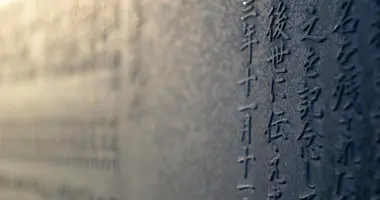Kanji Japanese Characters
- Published on : 26/06/2024
- by : Japan Experience
- Youtube
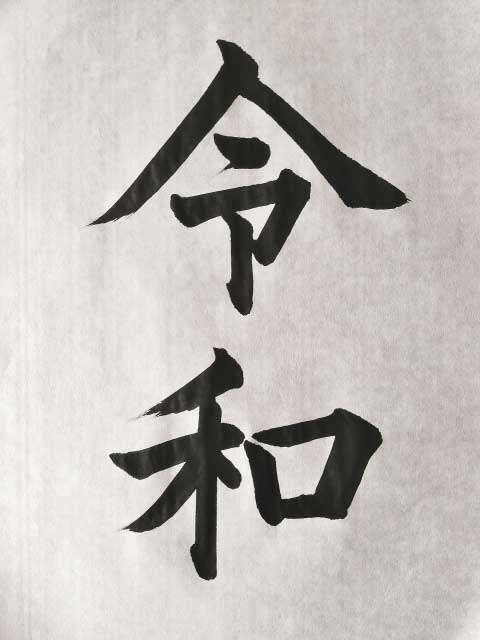
The kanji for Reiwa the new era name 令和
Kanji, the logographic characters adopted from Chinese, form a fundamental part of the Japanese writing system. Originating in China and introduced to Japan around the 5th century, kanji have since evolved to become an integral component of written Japanese. With thousands of characters in existence, mastering kanji is often considered one of the most challenging aspects of learning Japanese. However, understanding kanji is essential for achieving literacy and appreciating the nuances of the Japanese language and culture.
Origins and history of kanji in Japan
The journey of kanji to Japan began around the 5th and 6th centuries A.D., arriving via the Korean peninsula. At this time, Japan lacked its own writing system, and kanji were initially used to write Japanese words phonetically based on their Chinese sounds. The adoption of kanji marked a significant turning point in Japanese cultural development.
Initially, kanji were primarily used for official documents and Buddhist texts. The art of writing these characters, known as shodo or calligraphy, became an essential skill and remains a part of Japanese elementary school curriculum today.
Over time, kanji evolved to fit the unique characteristics of the Japanese language. By the 8th century, kanji had become an essential part of the Japanese writing system, alongside two native Japanese scripts: hiragana and katakana.
Components of the Japanese writing system
The Japanese writing system is a complex blend of four scripts:
- Kanji (漢字): Chinese characters used to write content words of native Japanese or Chinese origin.
- Hiragana (ひらがな): A phonetic script used for grammatical elements and native Japanese words.
- Katakana (カタカナ): Another phonetic script primarily used for foreign words, onomatopoeia, and emphasis.
- Romaji: The romanized version of Japanese, using the Latin alphabet.
This unique combination allows for a rich and nuanced written language, capable of expressing complex ideas concisely. Kanji play a crucial role in this system, providing semantic meaning and helping to differentiate between homophones.
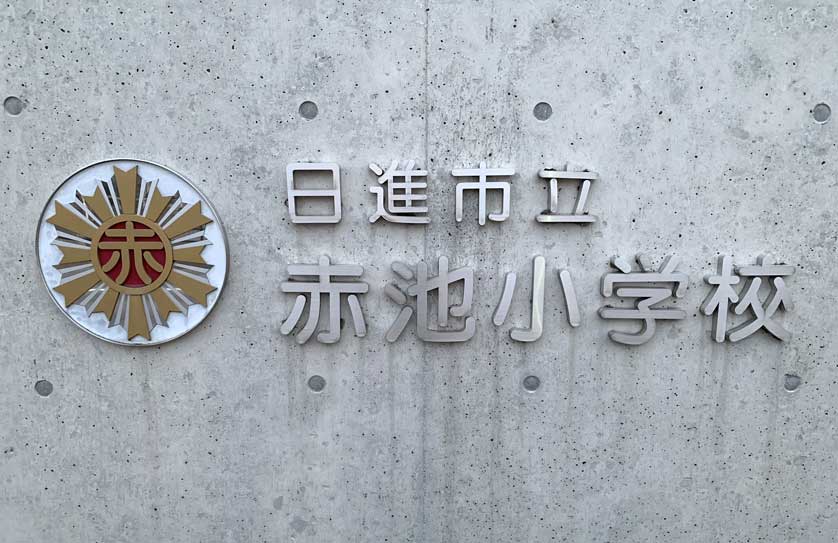
Japanese place name sign written in kanji - on the whole most place names use Chinese title
Types and categories of kanji
Kanji can be categorized in several ways:
1. By origin:
- Adopted Chinese characters
- Kokuji (国字): Characters created in Japan
2. By usage:
- Joyo Kanji (常用漢字): 2,136 characters for daily use
- Jinmeiyō kanji (人名用漢字): 863 additional characters for use in personal names
- Hyōgai kanji (表外漢字): Kanji outside the standard lists
3. By structure:
- Pictographs (象形文字): Simplified drawings of objects
- Ideographs (指事文字): Abstract concepts represented by symbols
- Compound ideographs (会意文字): Combinations of pictographs or ideographs
- Phono-semantic compounds (形声文字): Characters with semantic and phonetic components
Readings and pronunciations of kanji
One of the most challenging aspects of kanji is that most characters have multiple readings. These readings are generally categorized into two types:
1. On'yomi (音読み): The Chinese-derived reading, often used in compound words. For example, 山 (mountain) is read as "san" in compound words like 富士山 (Mount Fuji, read as "Fujisan").
2. Kun'yomi (訓読み): The native Japanese reading, often used when the kanji stands alone. Using the same example, 山 is read as "yama" when referring to a mountain in general.
The correct reading is determined by context, word usage, and historical factors. This multiplicity of readings adds depth to the language but also increases the complexity for learners.
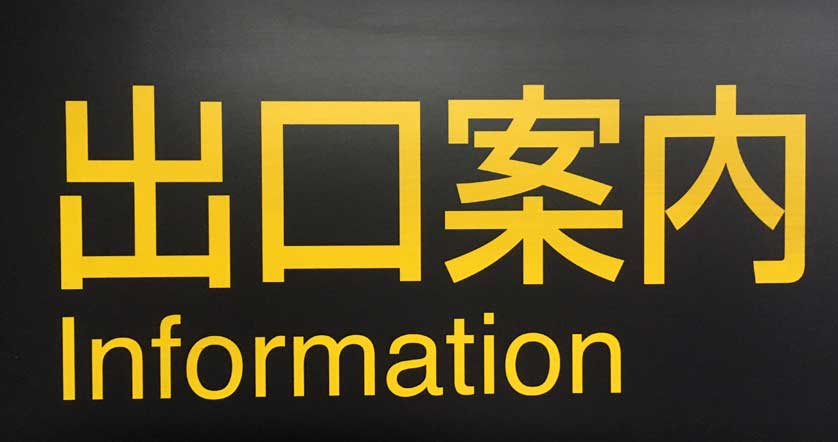
Understanding Japanese signs may well be beyond most visitors to Japan, though many have English or other language equivalents
Kanji usage in modern Japanese
In modern Japanese, kanji are used extensively in various contexts:
- Written communication: Kanji are essential in Japanese newspapers, books, and official documents.
- Names and places: Many Japanese names and place names use kanji, often with unique readings.
- Signage: Public signs, from street names to shop fronts, frequently use kanji.
- Digital communication: Kanji are used in texting, emails, and social media, with input methods adapted for digital devices.
The use of kanji allows for more concise writing and helps differentiate between homophones, which are common in Japanese. For instance, the word "はし" (hashi) can mean "chopsticks" (箸), "bridge" (橋), or "edge" (端), with kanji clarifying the intended meaning.
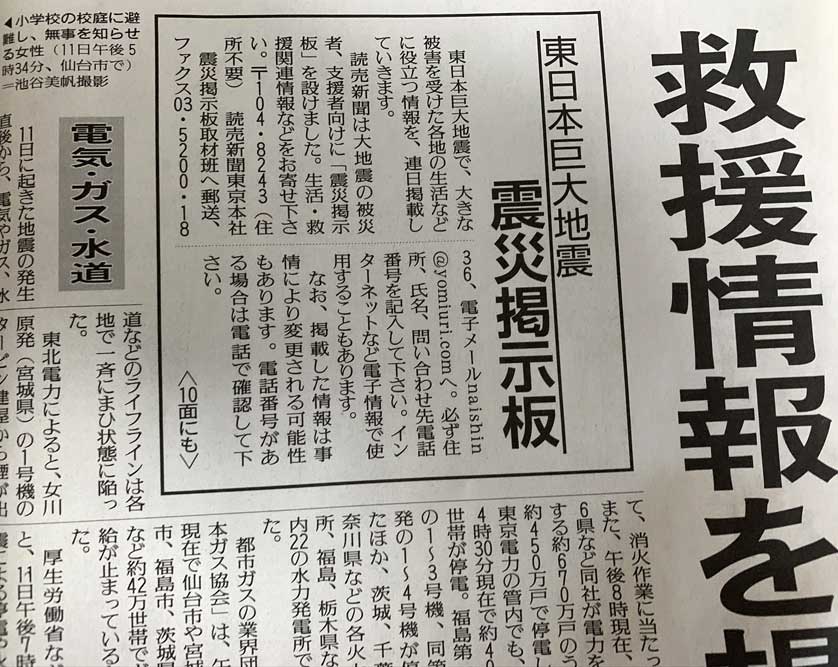
A knowledge of the basic kanji (Chinese characters) is essential to be able to understand a Japanese newspaper, book or official document
Learning and education of kanji
The process of learning kanji is a significant part of Japanese education:
- School curriculum: Japanese students learn kanji throughout their school years, with a standardized list of characters introduced each year.
- Kyōiku kanji: 1,026 basic kanji taught in elementary school.
- Joyo kanji: 2,136 characters considered necessary for functional literacy, taught up to high school.
For foreign learners, various methods are employed:
- Radicals: Learning common components to understand character structure and meaning.
- Mnemonics: Using stories or images to remember character meanings and readings.
- Context-based learning: Learning kanji through vocabulary and sentences.
- Kanji study apps and resources: Utilizing technology for efficient learning and practice.
Challenges and peculiarities of kanji
While kanji enrich the Japanese language, they also present unique challenges:
- Multiple readings: As mentioned, most kanji have several possible pronunciations.
- Homophones: Many kanji compounds share the same pronunciation but have different meanings.
- Stroke order: The correct order for writing strokes is important for legibility and recognition.
- Similar-looking characters: Many kanji look similar but have different meanings and readings.
- Context-dependent usage: The choice of kanji can change based on formality, nuance, or style.
Despite these challenges, mastering kanji opens up a deep understanding of Japanese culture and literature. It allows readers to appreciate nuances in written Japanese that might be lost in other scripts.
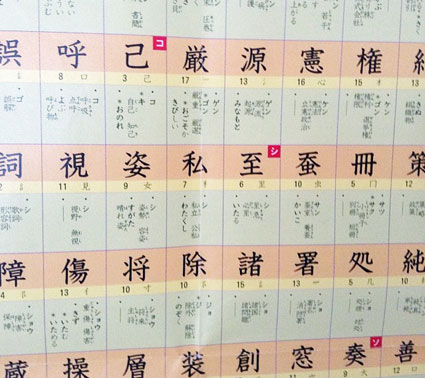
Sixth grade Kanji learning wall chart
Kanji input and technology
Modern technology has adapted to accommodate kanji:
- Input methods: Japanese keyboards use romaji or kana input, converting to kanji through predictive text.
- Digital dictionaries: Electronic devices and apps provide quick kanji lookup and stroke order animations.
- OCR technology: Optical Character Recognition allows for scanning and digital conversion of kanji text.
These technological advancements have made kanji more accessible and manageable in the digital age.
Kanji resources
For those looking to study kanji, numerous resources are available:
- Textbooks: Dedicated kanji textbooks like "Remembering the Kanji" by James Heisig.
- Online courses: Websites and apps offering structured kanji learning programs.
- Practice tools: Apps for flashcards, writing practice, and quizzes.
- Kanji dictionaries: Both print and digital versions for comprehensive reference.
- Books on Japanese Kanji: Various texts exploring kanji in depth.
In conclusion, while kanji present a significant challenge in learning Japanese, they are an integral and fascinating aspect of the language. Mastering kanji not only aids in achieving Japanese literacy but also provides insight into the rich cultural heritage and thought processes embedded in the Japanese language. With dedication and the right resources, the journey of learning kanji can be a rewarding and enlightening experience.
